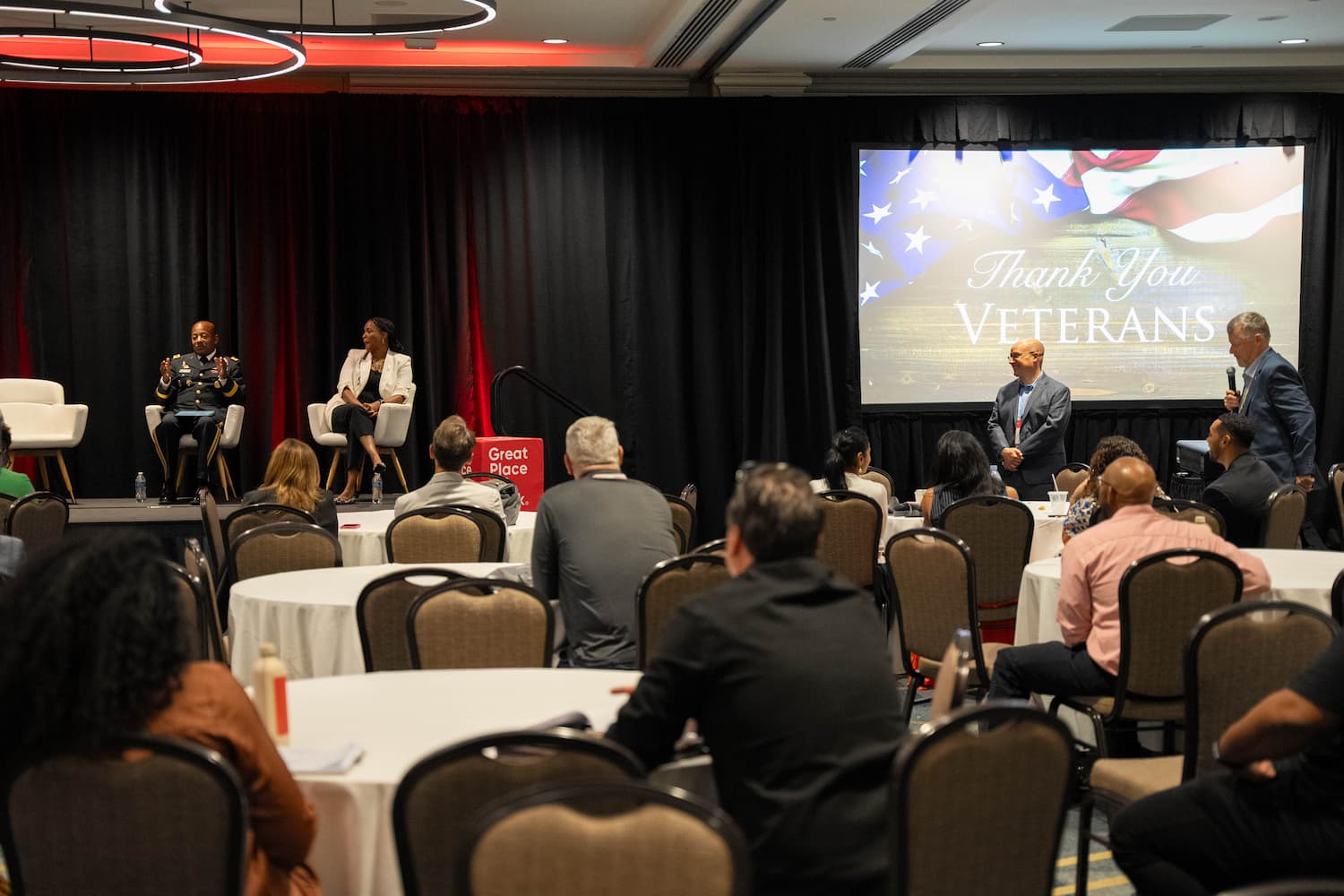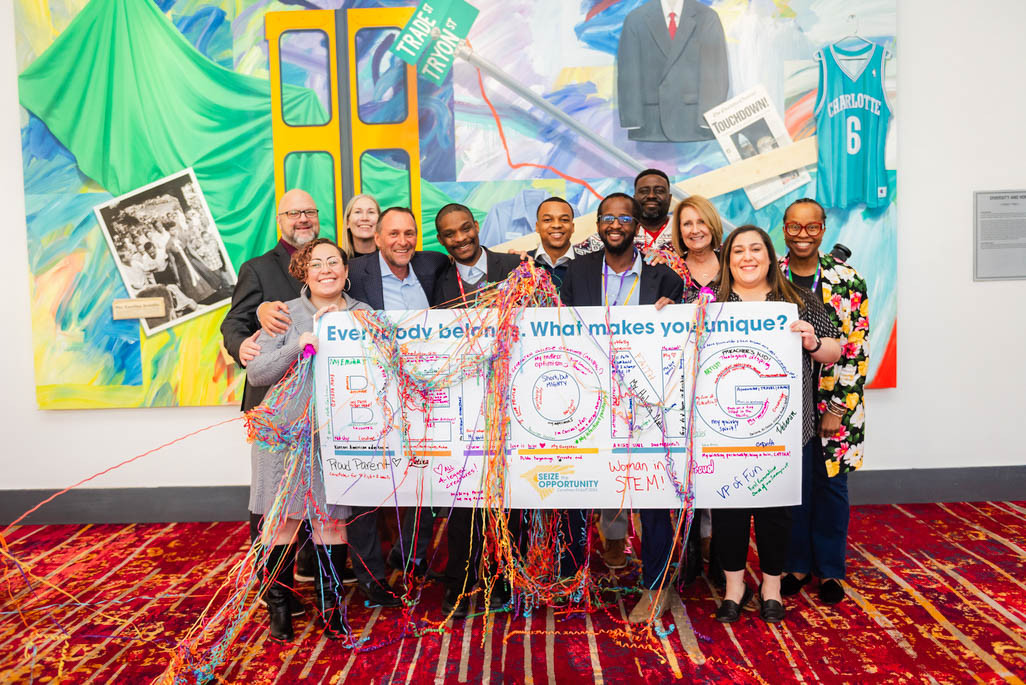Lessons from SAS, One of the World’s Best Workplaces
Business analytics and software provider SAS is well known for using HR analytics to improve its own performance as well as its clients’ performance. Jennifer Nenadic, Manager of Enterprise Analytic Services at SAS, will be sharing HR analytics insights at the 2015 Great Place To Work® Conference on April 22-23 in Dallas, TX. Recently, I interviewed Jennifer about her upcoming conference session.
How do you define predictive analytics?
Rather than jumping directly into predictive analytics, I would like to take a step back and talk about analytics in general. In working with both internal and external customers at SAS, I have found that there is a lack of clarity around what analytics exactly is. I'll talk about this during my 2015 Great Place To Work® Conference session.
The Institute for Operations Research and Management Sciences (INFORMS) has a definition that is commonly used and I think does a great job of answering the question: What is analytics? INFORMS defines analytics as the scientific process of transforming data into insights for the purpose of making better decisions. Analytics is always an action-driven approach. There is always a decision to be made when we look at doing analytics. Coming from a data science background and working with a lot of statisticians, data scientists love to analyze data just for the sake of analyzing it. However, it is important to ensure our analysis is driving business action. Ultimately, we want analytics to empower an organization's vision.
Analytics is a stair-step process in which predictive analytics is one step, but not the first step. The first step is visualization and exploration. This might entail, for example, using strategic reports to gain insight about your organization, its workforce, and the HR programs it offers. Understanding the organization and the changes that are happening in the organization can help a business leader make better decisions. So that is the visualization step. The next step is data mining. In data mining, we profile and look for reasons why things have historically occurred including factors that influence specific outcomes. Based on the past trends that are discovered in data mining, we can begin to predict things, which is the third step in the analytics process.
Predictive analytics looks at past trends. It looks at things that have happened and uses various factors to predict whether a certain outcome will occur in the future. One thing to always keep in mind regarding predictive analytics is that although it is a scientific process, it is predicting and not guaranteeing an outcome. Data scientists watch trends over time and develop an algorithm or a model that helps a business person predict, for example, what the organization's growth needs will be. As we look over time, we are able to measure the accuracy of our predictions. For example, we predicted Y was what we were going to need and what we actually ended up needing was X. Through monitoring we can improve and refine that model and algorithm so that we get better and better with our prediction and are better able to adjust as the business changes.
Why is it important for today's HR functions to leverage analytics?
When we think of analytics, one of the things that comes to mind is eBay or Amazon or Netflix—the companies that were built upon analytics. The reality is that the world is changing. Analytics is seeping into every industry and every area. For HR and companies, the reality is that the workforce is changing. Companies have more generations working for them at a single time than they've ever had before. When we look at Generation Y and the Millennials, we see that they have completely different needs and expectations than the Baby Boomers. So, the approaches that companies have historically used to acquire, retain, and invest in their staff may no longer be effective. If we continue to operate in the ways that we always have, we're going to miss out. We are going to miss the mark. There are so many companies that are taking advantage of analytics. These companies will take the talent away from the companies that do not use analytics.
One thing that I will talk about at the 2015 Great Place To Work® Conference is a study conducted in 2014 by Deloitte. In that study, Deloitte asked: How important is HR analytics? Sixty-six percent of companies said that analytics is important or urgent. We don't want to miss out on 1) acquiring the best talent and 2) retaining the talent that we have.
What kinds of projects or questions can predictive analytics help HR answer?
At the Great Place To Work® conference, I will show a list of questions that organizations can use in each phase of the employee life cycle that demonstrates how you can apply HR analytics to your HR vision and your HR strategies. From the acquisition perspective, some of the questions are: Can you predict your talent needs? Do you know what talent you need now? Do you know what talent you will need next year?
Every company is different. There are different factors that can make people successful in different companies. Many people do a great job in terms of reading all of the industry literature: This is what we should be focusing on, this is what we should be doing, and this is who we should be hiring. But is doing what everyone else is doing a good fit for your company? With analytics, we look at the key factors that make someone successful in a specific job function, in a specific area, of a specific company. We ask: Who are the most successful people at my company? How can I predict which factors are going to help me pick job applicants that will be just as successful? You look for key factors that help lead to success when someone is working in your company. By spending some time investing in analytics, we can truly know if those industry trends are also true for our company or not. Sometimes they will be, and sometimes they might not.
Other questions we might ask are: What's the timetable from when someone is hired to when they will become a successful resource? Can we predict the amount of investment time that you are going to need to get a new hire performing at full speed? If we can predict this, we can prepare for what the organization is going to need.
Can you give a case study example of how predictive analytics helped SAS improve? What were the outcomes?
A question that we commonly see companies asking is: How do we make sure that we retain our talent? Employee turnover is costly. Companies spend a lot of time investing in people and they don't want that investment to walk out the door. On average, in industry, turnover is about 16 percent. Here at SAS, we average about three-to-five percent turnover. One of the reasons that we have such a low average rate of turnover is because we are constantly looking at how we can better retain people. Analytics is a great way to empower that. As we begin to predict factors that increase an employee's risk of leaving the company, we get insight into what we can do as an organization to shift our business practices in ways that address those factors. The shift might involve providing more training or changing training locations. At SAS, we continue to expand our training and investment opportunities. We are investing in an entire new system to help track our training and leadership development. Another thing that we are doing at SAS, which analytics helped us to see the need for, is creating an easier mechanism for employees to have coaching conversations with their managers. So, we are heavily invested this year in building out a new performance management module in our HR system.
What do end-users (HR professionals, people managers, business leaders) need to know to leverage predictive analytics?
Something that we stress a lot within my team, and with data scientists at the companies that SAS works with, is to be sure to provide context when sharing analytics results. Whenever we are delivering results, we don't just present results. It is very important to present the original question, the intent, and the correct usages of the results. We don't want people to take information without the full context around it because they could unintentionally misuse the information.
Presenting the results is a partnership between analytics and the HR business partner. It is my analytics team's job to provide the information. Then, we work with the HR business partner to put HR language around what has been highlighted through the analysis. We allow the HR business partner to communicate the findings to the business area end-users. In addition, we recommend utilizing an iterative process to engage and provide insights to our HR business partner along the way and not wait until the end of an analytics project to deliver everything.
Sometimes our interactions extend into the implementation of the results provided during the initial analytics project. We can help the HR business validate the impacts of their business changes using an approach called experimentation analytics. So, for example, with retention and other HR issues, there are opportunities for data scientists and HR partners to test out theories for how to influence these outcomes. Let's say that the data has shown X, Y, and Z are factors in employee retention. We might think that by changing certain HR or business processes that we could influence these factors. We might partner to assess the influence of coaching or mentoring, and using experimentation analytics, we can test if that change in coaching ends up influencing retention risk.
Business partnership is absolutely key to success with analytics because the ultimate goal of analytics is to support and empower the business. If you are working in a silo and just throwing information and results over the fence, your ability to empower the business is incredibly diminished.
What are some common misconceptions about predictive analytics?
The big thing that I have seen in working with external customers is that everyone wants to start with predictive analytics: I want to predict what my needs are going to be in five years or in two years. They want to jump instantly into that predictive space. What I have found over the years is that before we can get to predictive analytics, we can find lots of short-term value in spending time exploring the data and visualizing it in new ways for our customers. In our projects at SAS, this is very much an iterative approach. We work a little bit and then every two-to-four weeks present the findings of where we are.
In those first sessions together, we usually step back and say for example: You want us to predict retention risk, let's start by just looking at information about 1) your organization and 2) the people who have left. We begin to show that over the past three years, turnover for a particular group has been continually increasing. The business is wowed. It changes their entire perspective just to have a visualization of what has happened in the past.
A lot of people want to skip over the visualization step because the buzz word says that they need to be predictive. But, just being able to take the information you have today and combine it in a strategic and powerful visualization is incredibly useful. And, to be honest, that doesn't require a data scientist. Analytics seems like this big concept that requires statisticians, and eventually it does, but there is so much power in just understanding your organization, looking at the question that you are asking, and exploring what's been going on historically. It can change the way businesses operate. So, the thing that I encourage as I am working with different groups and individuals, is for them to start by seeing the power of visualization. While we're working on building them a predictive model, we help them build some powerful strategic reports so that they can be tracking and exploring the data themselves.
What are tips that you could give to HR functions that are starting up their predictive analytics work?
I wrote a blog last year called Jump Start Your Analytics Program with Visualization and Communication and this may be a good jumping off point. The other tip, the other thing to keep in mind, is that analytics would not be successful without an entire team of varying roles. It's not just your statistician or your modeler that leads to analytics success. I recently posted a blog that talks about this, titled How to Build a Data Science Dream Team.
Register now to hear Jennifer Nenadic speak at the 2015 Great Place To Work® Conference on April 22-23 in Dallas, TX! You'll also hear from leaders of Best Companies and Great Place To Work® experts. Checkout the full conference agenda: 2015 Great Place To Work® Conference Agenda.
About Jennifer Nenadic
With a background in data management and analytics, Jennifer has aided SAS' leaders and external customers in strengthening their business by strategically transforming their current systems into intelligence-generating solutions using advanced analytics techniques and data management best practices. Jennifer has worked with clients across various industries to find creative designs and solutions to meet their evolving business needs. Jennifer holds Bachelor's degrees in Computer Science and Textile Engineering as well as a Master's degree in Advanced Analytics from North Carolina State University. Follow Jennifer on Twitter @JenniferNenadic.
About Elissa Tucker
Elissa Tucker is a research program manager at APQC. She is responsible for developing and executing APQC's human capital management research agenda. Elissa has written and been featured in many HR industry publications and is a regular speaker for HR industry webinars and conferences. Elissa has more than 15 years of HR research, writing, and advising experience. Prior to joining APQC, Elissa worked as a senior research consultant at, Hewitt Associates (now AonHewitt). Elissa co-edited and contributed to the book: Workforce Wake-Up Call: Your Workforce Is Changing, Are You?, John Wiley & Sons, 2006. Follow Elissa on Twitter @ElissaTucker and on the APQC Blog.
About APQC
APQC is a member-based nonprofit and one of the leading proponents of benchmarking and best practice business research. Working with more than 500 organizations worldwide in all industries, APQC focuses on providing organizations with the information they need to work smarter, faster, and with confidence. Every day we uncover the processes and practices that push organizations from good to great. Visit us at www.apqc.org and learn how you can make best practices your practices.







